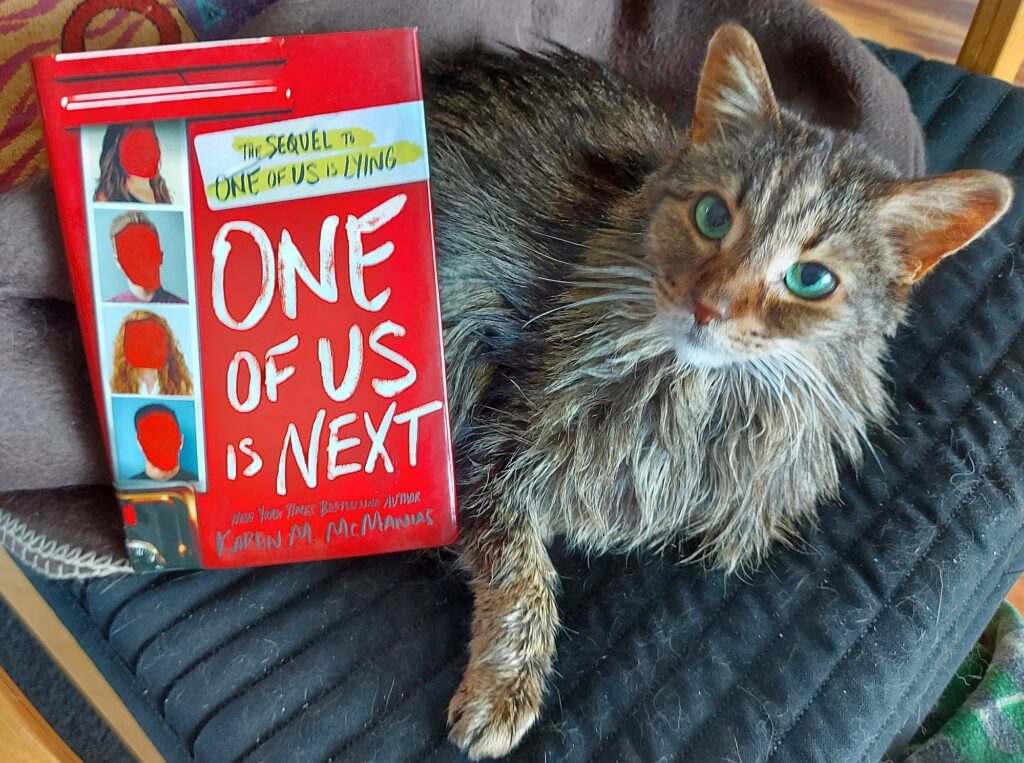One of Us is Next by Karen M. McManus

One of Us is Next is the sequel to One of Us is Lying. I read One of Us is Lying a couple of years ago. It has good reviews that make it sound like a twisty mystery that I would not be able to guess the ending of. It is about five high school students who are in detention together, and one of the students ends up dead. A gossip blog reveals secrets of the four surviving students that points to one of them being responsible for the death. I knew right away there was two possible explanations for what happened to the student that died, and the explanation I decided on turned out to be correct, so I was disappointed at how easily I figured it out. The surprising part of One of Us is Lying is not the whodunnit, but rather the motivation behind the death. The other thing I got from One of Us is Lying is how toxic of an environment high school is (I did not enjoy high school, but I really do not remember it being as bad as depicted in a lot of YA novels these days). McManus has another novel called Two Can Keep a Secret that I have read as well, but to be completely honest, I do not recall what happened, that is how memorable it is. So, you must be wondering by now why I would bother reading One of Us is Next. Well, first, I was trying to get free shipping at Book Outlet, and second, I was curious to know if McManus’ plotting had improved enough to keep me guessing until the very end.
One of Us is Next is set 18 months after One of Us is Lying at the same high school, which is as toxic as ever, and the four main characters from One of Us is Lying have become secondary characters as the focus shifts to a new group of high schoolers. This time it is not a gossip blog causing problems, but a game of truth and dare that is texted to every student at the school, which reveals painful secrets and ends with the death of another student. It quickly becomes evident in One of Us is Next that no one has learned a thing from the events in One of Us is Lying (see my review for Humans by Tom Phillips).
One of Us is Next is told from the perspective of three teenagers: Phoebe Lawton, neighbour to one of the four main students in One of Us is Lying; her family is still coping from the loss of her dad, who died in an accident at his construction job. She is the first student to receive a truth or dare text. She decides to ignore it and the sender reveals a shocking secret about her. Then there is Maeve Rojas, who is the younger sister of one of the four main students in One of Us is Lying and who helped solve the mystery in that novel. She is starting to show symptoms that her leukemia may be coming back, but for no good reason at all she decides not to tell anyone, including her parents. Okay then. Finally, there is Knox Myers, Maeve’s best friend and one time boyfriend. He ends up being humiliated and bullied at school when a secret involving him is revealed by the person behind the truth and dare game.
Phoebe, Maeve and Knox work together to figure out who is behind the game. What I cannot understand, though, is why the teenagers in this novel (and in a lot of YA novels for that matter) do not think to go to an adult for help, especially considering that none of them come from shitty homes with mean, abusive parents. They all have caring parents that they should be able to talk to and ask for help from, but I guess there would not be a plot if they cannot solve the mystery without adult interference. Also, none of the students say anything to the adults because they do not want their phones banned from their school. Because phones are more important than peoples’ lives. Got it.
As for the central mystery in One of Us is Next, like One of Us is Lying, it was not surprising who ended up being behind the deadly truth or dare game, but it was more surprising the lengths this person went to with the game, including throwing someone close to them under the bus, so to speak.
I think I am done with reading McManus’ novels. They are just not interesting or shocking enough to make me want to spend any more of time on them, regardless of how easy and quick they are to read.